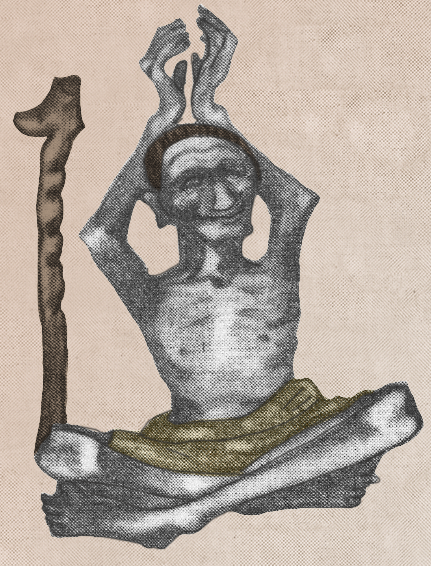
‘a ‘o faia le fono (alofi-sā) a al’i’i Manu’a. ‘Ona ‘o le taunu’u o le tama na fa’avevesi āi le fono, na poloa’iina ai e Tui Manu’a ‘ia fasioti le tama. Peita’i, ‘o Sina lona tuafafine sā na fa’aola ‘ i ā te ia.Sā taupulepule loa Sina mā Malalatea e sōsōla ma toe fo’i ‘i A’ele, lo lā’ua ‘āiga i Faleata i ‘Upolu. ‘Ina ‘ua iloa e Tui Manu’a ‘ua fuafua e lona faletua ‘o 1 e’ā tu’ua ‘o ia, sā ta’u atu loa ‘1 ,ā Sina e ‘ave lona Fale’ula :mo ia ‘i ‘Upolu. ‘0 le pogai lea na o’o atu ai le, Fale’ula ta’uta’ua o Tui Manu’a ‘i le ‘āiga o Sā-Mālietoā.’E leai se isi tala e uiga ‘i ā Malalatea; ‘ā tonu na ma.liu i.na ‘ua mavae ni nai tausaga talu ōna toe fo’i atu ma Sina mai Manu’a; peita’i, ‘o 1o ‘o iai pea_ni ona gafa ‘o lo ‘o ola pea i SalaMlua i $avai’i. ‘Ole mea lea na ‘avea ai Ātiogie, 1e atali’i lona lua o Fe’epō, ‘e suia lona tamā ma ‘avea ai ma uTu o le ‘aiga.’0 tala nei e lua, ‘e fa’ailoa mai ai ‘o Atiogie, ‘e le gāta i lpna loto- tele, ‘a ‘o lona agalelei tele fo’i M lona tamā matua, ‘ua matua lava ma. tauaso fo’i. Na o’o lava fo’i ‘ina sā pipili si toea’ina.

Two stories describe how Atiogie, of the Malietoa line, shows his bravery and kindness to his father Fe’epo when Fe’epo “had become old, blind and sick. In fact, he was a cripple.” (Lambie ed., p 31)
This illustration depicts joyful clapping of the elderly Fe’epo upon hearing of his son Atiogie’s victory in the games named “‘aigofie.” The second (see Atogie’s Kindness) illustrates only one of Atogie’s legendary kindness to his father. This story is about his exceptional selflessness, where he was rewarded for having given his father yams, while keeping nothing for himself.
This story also explains how Fe’epo came to have the Malietoa line. In background, Fe’epo, the ancestor of the Malietoa, had 3 children, 2 boys and one girl named Sina. Sina became the wife of the Tuimanu’a (King of Manu’a). One day Sina begged her brother Malalatea to visit her in Manu’a. Upon arriving, he mistakenly interrupted a sacred ceremony, Sina’s husband became infuriated and ordered him killed. However, Sina was able to save him. Disgusted, Sina and Malalatea determined to go home to their village of A’ele in Faleata (Upolu). Realizing she was leaving, and he could not persuade her otherwise, Tuimanu’a gave her his Fale’ula (The Legendary House of the King of Manu’a), thereby giving her possession of the Malietoa-family title.
Sadly, Malalatea, the second son of Fe’epo, died, but his descendants were still living in Sala’ilua (Savai’i). So Atiogie, the second son of Fe’epo, became the successor of his father as head of the family.
As a younger man, Fe’epo’s son Atiogie had determined to prevail as a master of the arts of combative sports. In the region popular games were held for the young men to show off their warrior skills and bravery. These popular events brought spectators from far and wide until the final champion prevailed. The matches were fought with the stem of the coconut leaf (lapalapa). Atiogie fervently desired to prove himself in these sports and secretly participated, without telling his father. His father became suspicious and began to pray in secret for his son’s success. Fe’epo prayed harder than ever, and promised a proper offering to Fe’e, the god of his household, if the final victory should be won by his son.
Although Fe’epo was both crippled and blind, and could not walk to Moamoa to witness the competition, he prayed with all the fervor he could muster until the evening of the third contest-day slowly drew nearer. Finally, his long and anxiously expected messenger arrived. The man reported that on that day, Atiogie was victorious. He had beaten them all.
This illustration depicts joyful clapping of Fe’epo upon hearing of his son Atiogie’s victory.
Comments are closed here.